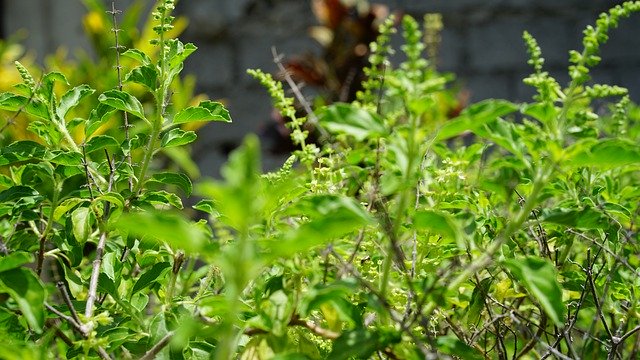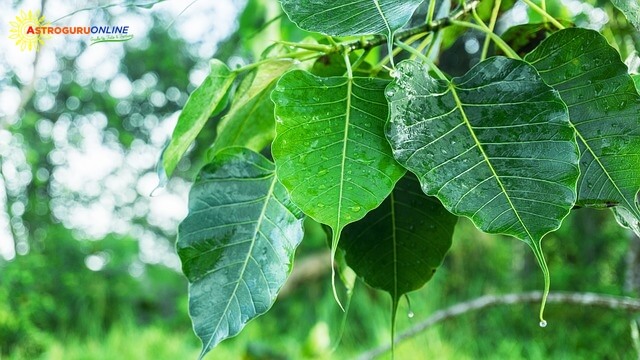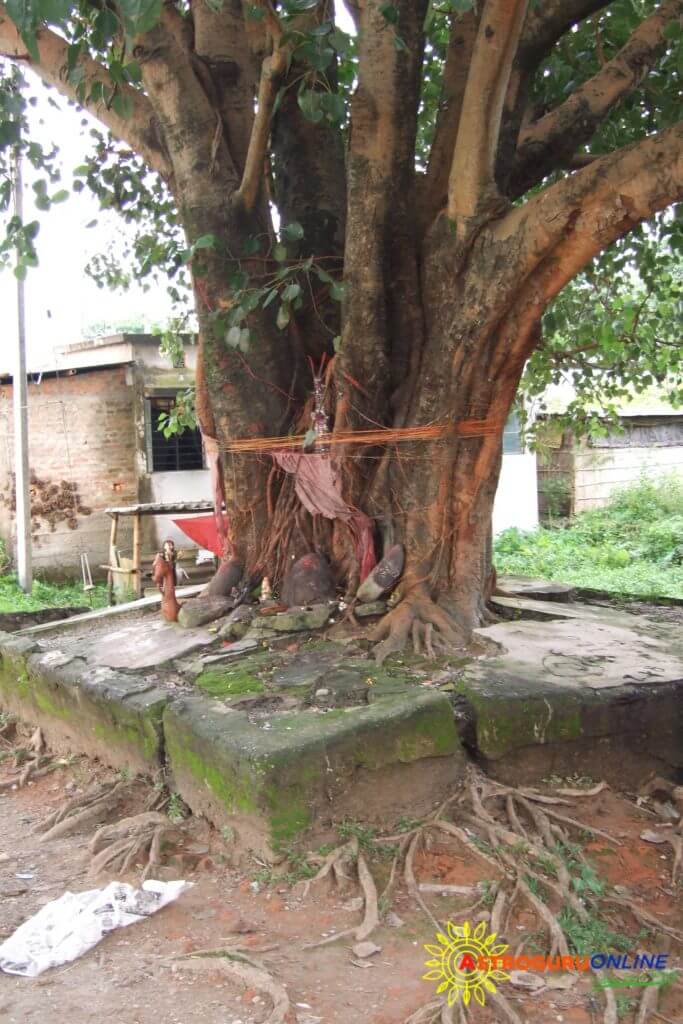Tulsi or the Holy Basil is a native plant of the Indian subcontinent and is cultivated throughout the South East Asian tropics. This plant is cultivated for numerous purposes which include:

- Medicinal use
- For extraction of its essential oils
- Religious and customary usage; and
- As a herbal tea.
Ocimum tenuifloram, the scientific name for Tulsi is a perennial plant and holds great significance among the Hindus for their rituals and traditions. The Hindus consider the Tulsi plant as the holiest of all plants, so much so that it is considered the bridge between heaven and earth.
Different names of the Tulsi plant and their meanings, according to the Vedas:
- Vaishnavi- meaning belonging to Vishnu.
- Vishnu Vallabha- which means beloved of Lord Vishnu.
- Haripriya- which also means beloved of Lord Vishnu
- Vishnu Tulsi
- Shri Tulsi- this is the green Tulsi, it means the fortunate Tulsi.
- Rama Tulsi- is the tulsi which is brighter in colour.
- Shyama Tulsi/ Krishna Tulsi- is the darker Tulsi with dark green leaves and purple stems, symbolic of Lord Krishna’s dark complexion.
- Lakshmi Priya- as Tulsi is considered an “avatar” of Goddess Lakshmi.
Origin of Tulsi
Four Mythological Stories relating to the Origin of Tulsi
- Jalandhara and Vrinda:
As per the “Skanda Purana”, Jalandahara the “Asura” (demon), was granted a boon by Lord Brahma, pleased by his penance. Lord Brahma announced that Jalandhara would become invincible and no one would be able to defeat him until his wife loses her chastity to someone else. Jalandhara absorbed with arrogance declared a war on the Gods.
Since Jalandhara was believed to be born from the flames which emerged from Lord Shiva’s third eye, he was an extremely powerful warrior. Lord Shiva and Jalandhara were neck to neck in the battle which lasted long. Jalandhara hoping that if he breached Parvati’s( Lord Shiva’s wife) chastity, he would be able to defeat Lord Shiva.
Jalandhara disguised as Lord Shiva approaches Parvati but gets recognised. Parvati humiliated and angered by this is said to have turned pitch black and her eyes turned blood red. This indicates Parvati taking the form of Goddess Kali.
Seeing this and realising that he was no match for the Goddesses’ fury, he fled. Parvati then goes to Lord Vishnu and asks him to take the form of Jalandhara and go to his wife Vrinda and breach her chastity as it was the only way to defeat Jalandhara. She assured that this would not be counted as a sin.
Lord Vishnu disguised as Jalandhara, tricks his wife Vrinda and violates her chastity. Overcome by grief and anger, Vrinda curses Lord Vishnu that he be turned into a black stone “Shaligram”, still believed to be found on the banks of the Gandaki River.
Vrinda also curses him that one day his wife would be abducted with deceit and she would be separated from him. This curse materialises when Sita, wife of Lord Rama, an avatar of Lord Vishnu, is abducted by a demon king, Ravana. Jalandhar loses the battle and gets killed by Lord Shiva.
Having cursed Lord Vishnu, Vrinda throws herself into the funeral pyres of her husband and performs “Sati”. Lord Vishnu repented having betrayed his own devotee accepts the curse. Lord Vishnu in turn promises that from her ashes, a plant would be born, this plant would be called Tulsi and the plant would be married to the black stone “Shaligram”, this would forever ensure her chastity. He also declared that he would never eat without Tulsi, hence a holy Tulsi plant is always offered with Lord Vishnu’s “prasadum”.
- Sanchukda and Tulsi:
According to the “Devi Bhagwatam”, Sankchuda, was a powerful “Daitya”, meaning demon. He underwent deep meditation or “tapashya” and impressed Lord Brahma. Lord Brahma gifted Sankchuda with the “Vishnu-Kavach” (armour of Vishnu) and a blessing of eternal life. He declared that as long as the “Vishnu-Kavach” was on Sankchuda’s body, no one would be able to demolish him.
Though Sankchuda was a man of faith and religion, he sometimes erred for the sake of his community. After conquering the “tri-lok” or the three worlds, he chased out the Gods from their heavenly abode. Lord Shiva declared a war on him but was unable to defeat him.
Lord Vishnu knowing that the war would be futile as long as Sanchukda still possessed the “Vishnu –Kavach”, disguised himself as a poor “’brahmin”. He went to Sanchukda and expressed his desires of owning the armour (Vishnu-Kavach) that he was adorning. Sanchukda being a generous and a kind man could not refuse hence, granted the “Brahmin” his armour. Therefore he was now deprived of his power of invincibility and was defeated in the war.
Lord Vishnu using his delusionary powers taking the form of Sankchuda approaches “Tulsi” wife of Sankchuda. When Tulsi senses treachery and demands to know who he was, Lord Vishnu exposes himself in his true form. She was persuaded to renounce her earthly form and to return to their celestial home as “Tulsi” is also believed to be an avatar of Goddess Lakshmi, consort of Lord Vishnu.
Enraged that her wifely chastity and purity towards Sankchuda was hampered, Tulsi curses Lord Vishnu that he be transformed into a black stone, “Shaligram” as she believed he was as hard and emotionless as a stone. It is believed that her mortal remains decayed and transformed into the Gandaki River and her hair formed the holy Tulsi plant.
- Tulsi and Radha
According to the Hindu Mythology, Tulsi is believed to be an “avatar” of Radha, Lord Krishna’s beloved. Vrinda is thought to be just another name for Radha. During his childhood in Mathura, Krishna played with Radha in the forest which was known as “Vrindavana” or the “Garden of Tulsi”. Lord Krishna himself is a prominent reincarnation of Lord Vishnu.
Another legend suggests that there was a princess who falls in love with Lord Krishna and out of sheer jealousy Radha curses her and transforms her into a holy Tulsi plant.
- “Samudra Manthana”
The “Samudra Manthana” relates to the event in Hindu mythology when the churning of the cosmic oceans is carried by the Gods and the Demons in order to procure “Amrit”, the elixir for eternal life. The “Vaishnava” legend states that when “Dhanavantari”, the God of Medicine emerges from the ocean carrying the “Amrit”, Lord Vishnu sheds tears of joy, the first drop of which flows into the elixir and forms Tulsi.
Tulsi and Hinduism
The Roots of Tulsi:
According to a Hindu prayer, the creator or Lord Brahma is believed to reside in the branches of Tulsi , all Hindu pilgrimages including the River Ganges are said to reside in the roots of the Tulsi, the deities are believed to reside in the stem of Tulsi and also its leaves and the Vedas are supposed to be in the upper part of the branches. Among the women this holy basil or sacred Tulsi is the prime symbol of devotion. Tulsi is referred to as the “women’s deity” and a symbol of wifehood and motherhood.
Also referred to as the “central sectarian symbol of Hinduism”, the Tulsi is considered by the Vaishnavites as the manifestation of God in the plant kingdom. It is a common practice for a Hindu household to grow a holy Tulsi plant. The Brahmins and other Hindu castes of the Vishnavites usually follow this practice and a house with a Tulsi plant is generally considered equal to a place of pilgrimage.
The grove where Tulsi is grown is considered sacred and is referred to as “Vrindavan” meaning grove of Tulsi. A custom “Vrindavan” in house is an elevated cuboid stone or brick structure which is usually located in the centre of the courtyard or in front of the house.
Tulsi and Moksha
According to Hindu beliefs, a person is believed to attain Moksha or salvation if he/she waters and cares for the Tulsi daily, even if they do not worship it. Usually the daily worship and care of sacred Tulsi is taken up by the women of the household. People are expected to worship the holy basil daily but Tuesdays and Fridays are considered especially favourable for Tulsi worship.
The person taking care of the plant usually waters it, cleans the area around the plant with water and cow dung and makes an offering of flowers, foods, incense and Ganga water. Devotees pray and circumambulate the plant while chanting mantras.
Some households also make “rangoli” or decorative designs of deities and saints near the bottom of the Tulsi plant. People generally worship the Tulsi plant twice a day, one in the morning and then in the evening.
The importance of Tulsi in Orissa:
On the first day of “Vaisakha”, the Hindu month between April and May, a small vessel with a puncture at the bottom is placed above the Tulsi plant. This vessel is filled with water, which keeps pouring down on the Tulsi plant steadily. This period of one month when an individual keeps the Tulsi plant cool and hydrated in the hot summer days is considered auspicious, in the sense that this act is supposed to cleanse a person of all his sins. The stream of water also symbolises the wishes for a good monsoon.
Lord Shiva and the Significance of Tulsi:
When it comes to the worship of Lord Shiva with Tulsi, there are two opposing ideals. Shaiva a rival sect to Vaishnavas, who worship Lord Shiva, do not use Tulsi. “Bael” leaves are generally preferred by followers of Lord Shiva but Tulsi is also widely used by others symbolising the omnipresence of Lord Shiva. The aniconic symbol of Lord Shiva, the “linga” is also said to be made from the roots of a Tulsi plant.
However when it comes to worshipping “Devi” or the Hindu divine mother, Tulsi is strictly avoided as it is believed that the pungent stench of Tulsi will anger her.
Tulsi Vivah or Marriage:
In between “Prabhodini Ekadashi” or the eleventh lunar day of the waxing moon of Karthika, till “ Karthik Poornima” which is the full moon in Karthika, a ceremony of Tulsi Vivah is performed among the Hindus. In Tulsi Vivah a wedding of Lord Vishnu is performed with the Tulsi plant. It is a ceremonial wedding where Vishnu in the form of Rama, Krishna or Shaligram is worshipped along with Tulsi and are married as per Hindu ritual.
This ceremonial wedding marks the end of the “chaturmaas” period or the four monsoon months which is also considered inauspicious for Hindu weddings. Hence, this Tulsi Vivah marks the end of the “Chaturmaas” and the beginning of the wedding season in India.
Tulsi Mala
Tulsi is indispensable in the worship of Lord Vishnu, his incarnation of Krishna and Vithoba also other Vishnava deities. Garlands or Tulsi mala is made of ten thousand Tulsi leaves, Tulsi is mixed with water, food items are sprinkled with Tulsi and offered in reverence to Lord Vishnu or his “avatar”.
Japa Malas or Tulsi Mala:
Among the Vaishnavas a japa mala or a string of Hindu prayer beads is made from Tulsi stems and roots which is referred to as Tulsi mala. A Tulsi mala is considered auspicious and is believed to bring the wearer in connection with Lord Vishnu or Krishna. This Mala is not only supposed to bridge the gap between earth and heaven but also confer the blessings of these deities on the wearer of Tulsi Mala.
Japa Mala or Tulsi Mala can be worn as a necklace or held in the hand as a rosary. This is of high significance to the Vishnavas, as they are known as “those who wear the Tulsi around their neck”. Devotees also go on a pilgrimage to Dwarka with Tulsi plants in their hand.
Tulsi and its Health Benefits:
Tulsi is known for its never ending list of medicinal properties:
- Tulsi is rich in antioxidants. Antioxidants protect the cells from damage caused by free radicals. Free radicals are the molecules which are produced by the body in response to various radiations or environmental stress. It therefore relieves diabetes and hypertension.
- Tulsi contains linoleic acid known for its benefits for the skin. It is also known to contain triterpenoid ursolic acid which is used in the prevention and treatment of various skin diseases like itching, ringworm, skin cancer etc. It is known for its anti-aging properties therefore used as an anti-wrinkle and to enhance skin elasticity.
- It is used as a common household remedy for fever. It acts as an antibiotic, antiviral and anti-carcinogen. It is used for the adjunctive treatment of hepatitis, malaria, tuberculosis, dengue and swine flu.
- It helps to improve the immune system and also improves digestion.
- It is an adaptogen, therefore helps to regulate cortisol, a stress hormone in our bodies hence alleviating stress or adapting our bodies to stress.
- It also acts as an insect repellent.
- It is known to decrease the risks of kidney infections as it regulates the uric acid levels in the body.
- If taken moderately, chewing of Tulsi leaves is said to improve gum health and prevent mouth ulcers.
- Drinking Tulsi tea or a decoction of Tulsi helps fight symptoms of asthma and other respiratory illnesses such as bronchitis.
- Tulsi is loaded with phytonutrients which possess anti-inlammatory, anti- oxidative and anti carcinogenic properties. Phytonutrients enhance immunity, intercellular communication and aids in the repair of DNA damage.
- Tulsi is rich in essential oils and vitamins such as A and C.
- When Tulsi is combined with herbs such as “Arjuna”, it is known to regulate heart diseases.
Tulsi and its Spiritual Significance
Th holy Tulsi plant helps to harmonize our spiritual and emotional lives giving us a better understanding of ourselves. According to the ancient Hindu texts it is customary to plant Tulsi in the Karthik month. The Skandapurana states that one gets rid of more of his/her sins the more he/she plants the Tulsi plant. The Padampurana says that a home where there is a Tulsi plant can be considered as a place of pilgrimage.
Homes where the Tulsi grows are considered free from bacteria. Even the God of Death, Yama is said to refrain from entering a home where Tulsi grows.
Ancient Hindu texts state that people who come in contact with Tulsi benefit both physically and spiritually. The planting of a single Tulsi plant is said to invoke the presence of Brahma, Vishnu and Mahesh. Furthermore, the benefits of sacred places like Pushkar and holy rivers like Ganga are said to be available, in places where Tulsi is planted.
Therefore, Tulsi is indispensable among the Hindus and followers of Lord Vishnu. It offers auspicious benefits, generously and also is considered to remove stress and negativity. Without Tulsi a major portion of Hindu ceremonies remain incomplete and even in Shradh, it is used to please our forefathers.



